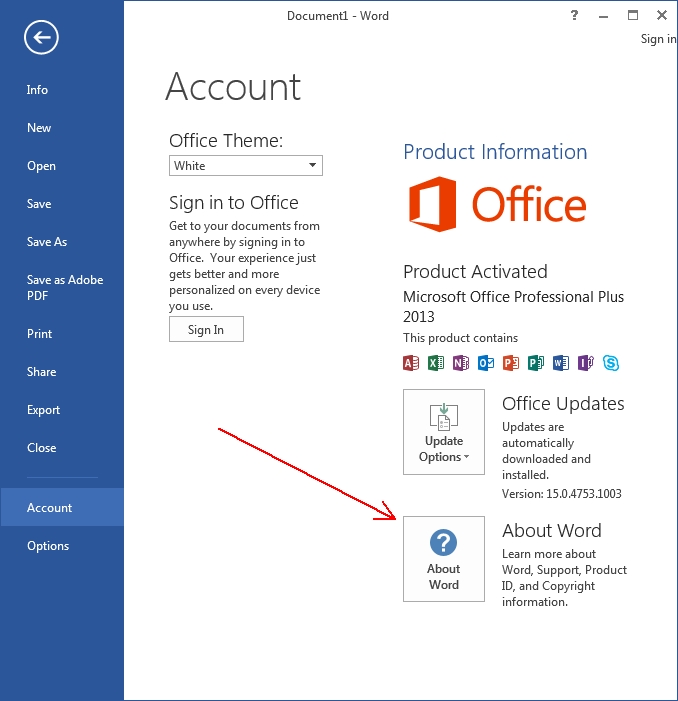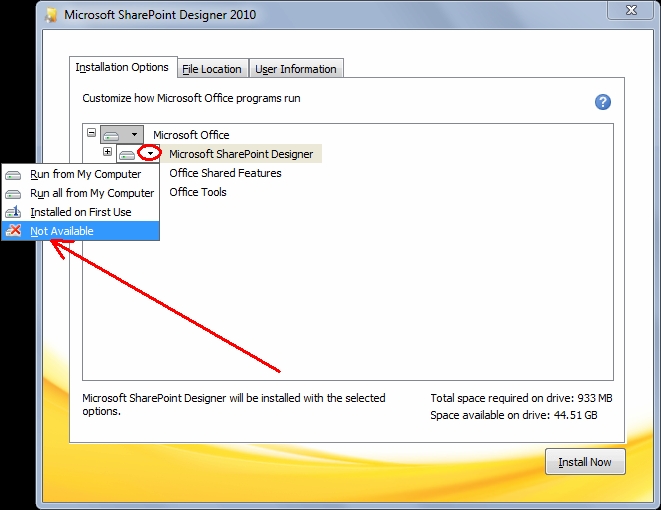1. Determine the bit-level of your Office 2013.
Open any Word document (a new, blank one is fine).
To see if you have the 32-bit or 64-bit version of Office 2013, click the File menu, then Account, then About Word.
![Step1a]()
![Step1b]()
2. Download the Microsoft SharePoint Designer.
Download the matching bit-level for your Office 2013 from one of these links:
32-bit
http://www.microsoft.com/en-us/download/details.aspx?id=16573
64-bit
http://www.microsoft.com/en-us/download/details.aspx?id=24309
![Step2]()
3. Run the downloaded SharePoint installer.
Using Windows/File Explorer (or whatever file manager you prefer), execute the downloaded installer and on the opening screen click the
Customize button.
![Step3]()
4. Mark all three program sections as Not Available.
Click the drop-down on Microsoft SharePoint Designer and select
Not Available.
Click the drop-down on Office Shared Features and select
Not Available.
Click the drop-down on Office Tools and select
Not Available.
![Step4a]()
![Step4b]()
5. Select Picture Manager to install.
Click the plus sign for Office Tools to expand it.
Click the drop-down on Microsoft Office Picture Manager and select
Run from My Computer.
Click Install Now.
![Step5]()
6. Close the dialog showing that the installation was completed.
Click the Close button.
![Step6]()
7. View the Microsoft Office 2010 Tools program group.
Look in your program groups and you will find a new one called Microsoft Office 2010 Tools.
Open it up and you will see a shortcut to Microsoft Office Picture Manager.
![Step7]()
8. Run Picture Manager.
Click the Microsoft Office Picture Manager shortcut to run it!
![Step8]()
That's it! If you find this video to be helpful, please click the
thumbs-up icon below. Thank you for watching!
















